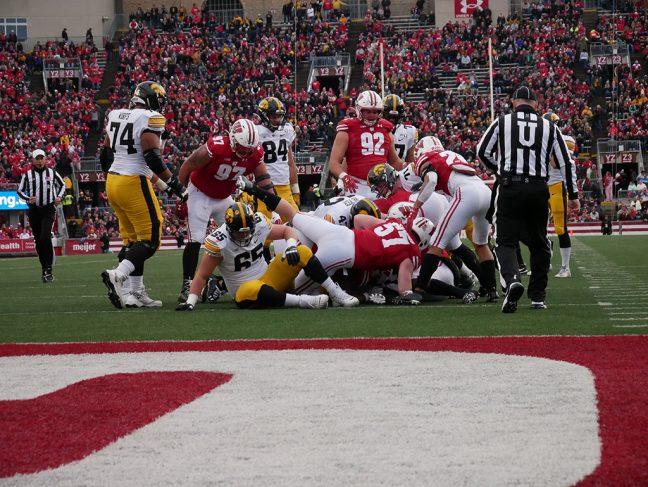Anne Isman ([email protected]) is a freshman studying economics.
Earlier this month, a fight between Cleveland Browns pass rusher Myles Garrett and Pittsburgh Steelers quarterback Mason Rudolph became headline news after Garrett removed Rudolph’s helmet and attempted to hit him in the head with it.
While Garrett has been indefinitely suspended by the NFL, and his actions have received condemnation from Steelers fans as well as his teammates, this altercation comes as no surprise when, in the words of former NFL running back Arian Foster, “If you watch football you condone assault.”
While fights may not escalate as much as Thursday’s incident did, football, like many contact sports, is inherently violent, which is often one of the main reasons viewers tune in.
Likewise, during the Badger Men’s hockey game against Notre Dame on Nov. 15, I witnessed several instances of fighting between opposing players. The referees quickly stepped in, much to the dismay of the crowd of Wisconsin fans who rose from their seats to root for the Badgers player involved. As thrilling as the hockey game was, fans were noticeably as enthusiastic about the fights as they were about the scoreboard.
Although the fight between Garrett and Rudolph was far more intense than the interactions between the Badgers and the Fighting Irish, the condemnation of one incident but acceptance of the other calls into question how violence has become an expected and perhaps integral part of sports entertainment.
What is most alarming is that some of the players are not much older than myself. Encouragement to participate in such fights can result in serious injury, possibly benching them for a season or jeopardizing a future career.
Given that aggression is a natural component of both football and hockey, whether it is tackling or checking an opposing player, sports have been referred to as “sanctioned” violence by some researchers.
According to sports economist R. Todd Jewell, watching these fights in sports allows us to “experience a sense of catharsis.” Not only that, but watching others act aggressively can allow us to “vicariously release [our] pent-up emotions.”
Observing sports culture as a non-fan attending a football school
Studies have even shown that within limits, an increase in aggression in a given sport correlates with higher viewership, as is the case in the NHL. As entertaining as sports may already be to viewers, fans are attracted to the excitement of fighting during plays.
Despite the presence of violence, sporting events unify us, whether Badger fans are adorned in red on Saturdays before a football game or cheering in the student section of the Kohl Center.
At a Big Ten school like UW, where so much attention is given to sports and athletic performance, players feel an overwhelming amount of pressure to succeed, and in turn can become “overly aggressive” during play, according to Lynn Jamieson, an expert in governmental sports policy. Simultaneously, fans support this aggression when we cheer on a player who has just been penalized or who has just fought an opposing player.
Still, while our encouragement of violent behavior on the field or the rink does not translate to our support of such behavior outside of a stadium, by cheering on fighting players, we are accepting their actions and further condoning them in sports. Not only is this a show of poor sportsmanship — this is not what these games are about.














